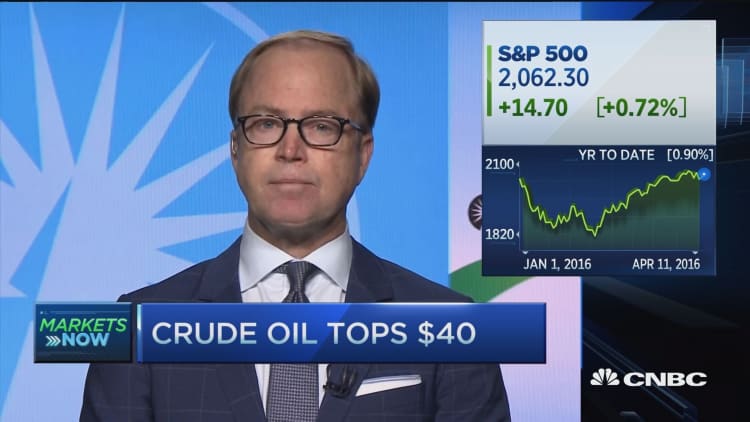
Companies are relying on financial engineering to achieve profit growth in the face of middling U.S. economic gains, S&P Investment Advisory Services Chairman Mike Thompson said Monday.
"A lot of what you do see in terms of the profit growth you do have now is engineering," such as stock buybacks and global labor arbitrage, he told CNBC's "Squawk Box."
"These are the levers companies have to work with. They're taking advantage of the fact that there's a lot of opportunities to just continue to engineer their earnings."
Company reports are expected to show a 6.9 percent decline in earnings per share for the first three months of the year, according to Thomson Reuters I/B/E/S data. Earnings per share for S&P 500-listed companies fell 2.9 percent in the final quarter of 2015.
In this environment, it is not earnings, but "a really awful U.S. Treasury 10-year yield" that is driving stock prices, Thompson said. Investors are not necessarily rewarding companies for engineering their way to profit growth, he added. They simply have few other opportunities for yield.
"There's a demographic thing going on here," he said. "You have one of the largest and wealthiest — for sure — generations in the history of mankind, being the boomers, all at a point where they have to be putting money into something."
"In effect, it's very rational to be buying stocks. It sounds crazy. You say, 'Wow, there's no earnings growth,'" he said.

Valuation has been the only pillar supporting the stock market as earnings growth turned negative and liquidity conditions seized up, said Jurrien Timmer, director of global macro at Fidelity Investments.
Markets are getting a reprieve from liquidity tightening following the Fed's indication that policymakers will only raise rates twice this year, he told CNBC's "Squawk on the Street" on Monday. The Fed had earlier indicated four rate hikes in 2016.
Prior to the revision, expectations of higher U.S. interest rates while Europe and Japan were easing drove up the dollar, he said. That put the squeeze on the Chinese yuan, causing foreign exchange drawdowns, which creates a form of tightening, he said.
The dollar has since eased, but Timmer warned that liquidity could tighten again because U.S. and overseas monetary policy are still fundamentally diverging.
As for earnings, the worst of the declines could be over, so long as oil prices continue to rise and the dollar doesn't significantly strengthen, he said.
"For me, the question is, does earnings growth ex-energy actually go negative, which so far hasn't happened, ... or is this just a moderation of earnings growth that's more benign, like we've seen in some other sort of midcycle slowdown cycles," he said.





